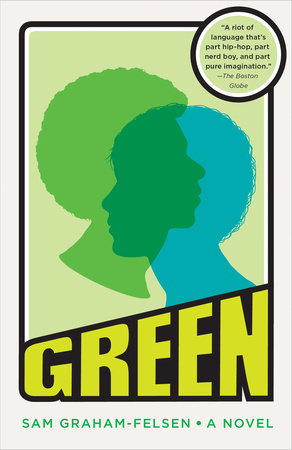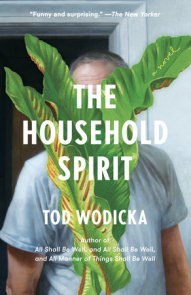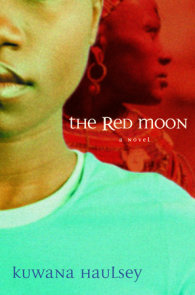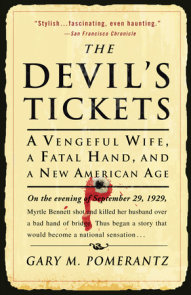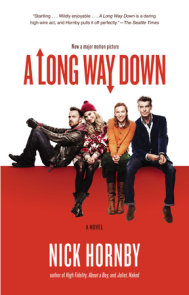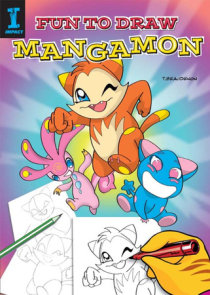TEACHING GUIDE
NOTE TO TEACHERS
Please click on the PDF link at the bottom of this page to download the Teacher’s Guide.
ABOUT THE BOOK
Boston, 1992. David Greenfeld is one of the few white kids at the Martin Luther King, Jr., Middle School. Everybody clowns him, girls ignore him, and his hippie parents won’t even buy him a pair of Nikes, let alone transfer him to a private school. Unless he tests into the city’s best public high school—which, if practice tests are any indication, isn’t likely—he’ll be friendless for the foreseeable future.
Nobody’s more surprised than Dave when Marlon Wellings sticks up for him in the school cafeteria. Mar’s a loner from the public housing project on the corner of Dave’s own gentrifying block, and he confounds Dave’s assumptions about black culture: He’s nerdy and neurotic, a Celtics obsessive whose favorite player is the gawky, white Larry Bird. Before long, Mar’s coming over to Dave’s house every afternoon to watch vintage basketball tapes and plot their hustle to Harvard. But as Dave welcomes his new best friend into his world, he realizes how little he knows about Mar’s. Cracks gradually form in their relationship, and Dave starts to become aware of the breaks he’s been given—and that Mar has not.
Infectiously funny about the highs and lows of adolescence, and sharply honest in the face of injustice, Sam Graham-Felsen’s debut is a wildly original take on the American dream.
ABOUT THE AUTHOR
Sam Graham-Felsen was born and raised in Boston. He has worked as chief blogger for Barack Obama’s 2008 campaign, a journalist for The Nation, and a peanut vendor at Fenway Park. This is his first novel.
NOTE TO THE TEACHER
Green is a coming-of-age novel that follows David Greenfeld as he navigates his first year in middle school and the complexities of adolescence. The self-described “white boy at the Martin Luther King Middle” narrates his struggle to establish his own identity while grappling with larger questions of race, religion, sexuality, and privilege.
Supporting the national Common Core State Standards (CCSS) in Reading Literature for grades 6–8 curricula, Green is an appropriate selection for grades 6–8 in Language Arts and Reading classes. Note: while Green is an appropriate middle-grade novel, the narration contains strong language including profanities, racial epithets, and graphic language.
In the following “Examining Content Using Common Core State Standards” section of this guide, prompts offer opportunities for a critical analysis of Green using the CCSS for Reading Literature for grades 6–8, and are organized according to the standards they primarily support. In addition, following each standard and its corresponding prompts is a classroom activity that is designed to further enhance analysis of the text.
PRE-READING ACTIVITIES
Encourage students to develop a deeper understanding of Green’s broader themes through a “privilege walk.” A Peace Learner lesson plan for a privilege walk can be found here: tiny.cc/privilegewalk. In lieu of an actual walk, students may also privately keep track of their responses, followed by a class discussion.
Conducting a discussion centered on race relations and racial literacy will also encourage a more nuanced reading of Green. An appropriate starting point is a TED Talk by Priya Vulchi and Winona Guo: tiny.cc/RacialLiteracy. Because race can be a sensitive discussion topic in a classroom, it is helpful to consider classroom dynamics and spend time preparing for discussion. This graphic organizer (tiny.cc/DiscussionPlan) from Teaching Tolerance is a useful aid for pre-planning and also suggests strategies for responding to a range of student emotions, including anger, blame, guilt, and shame.
You can also listen to author Sam Graham-Felsen discuss the book and some of its themes in an interview with NPR: tiny.cc/SamGrahamFelsen.
EXAMINING CONTENT USING COMMON CORE STATE STANDARDS
ELA STANDARDS: READING INFORMATIONAL TEXT: GRADES 6–8
KEY IDEAS AND DETAILS
CCSS.ELA-LITERACY.RL.6.1
Cite textual evidence to support analysis of what the text says explicitly as well as inferences drawn from the text.
CCSS.ELA-LITERACY.RL.7.1
Cite several pieces of textual evidence to support analysis of what the text says explicitly as well as inferences drawn from the text.
CCSS.ELA-LITERACY.RL.8.1
Cite the textual evidence that most strongly supports an analysis of what the text says explicitly as well as inferences drawn from the text.
1. The novel begins with two quotes. One is from Ralph Ellison: “Why, you could cause us the greatest humiliation simply by confronting us with something we liked.” The other is from Larry Bird: “I think everyone should have the kinds of life I’ve had, going from one extreme to the other.” Why do you think the author chose these quotes to lead into the story? What is their relationship to the story? Identify specific textual evidence that connects to the quotes and provides meaningful context regarding their inclusion.
2. Dave describes the Bird–Magic card as his “prized possession” (36), and yet he is willing to sell it to buy a new “Machine.” On the other hand, Marlon continually insists that Dave keep the Bird–Magic card. What does the card represent to each of them, and why is Marlon so adamant that Dave keep it? What is the value of the “Machine” to Dave? What does it represent to Marlon?
3. While listening to Skip Taylor speak, Dave describes the scene: “Kaleem’s nodding, Mar’s face is just hanging there, like someone pricked the air out of him” (145). Why does Skip’s story have differing effects on Kaleem and Marlon? How does Skip Taylor’s description and story about Harvard impact Marlon’s view of the future?
4. Despite Dave insisting, “I’m leaving if you do it” (237), Dave’s dad attempts to start the wave at the Red Sox game and it actually works. What do Dave’s dad’s actions reveal about him? How and why does this event change the way that Dave sees him? Dave later starts the “slow clap” at the Celtics game and is successful. What can the reader infer from Dave’s actions about how he views the world? How does this connect to the larger theme about the power of a single person’s actions?
CLASSROOM ACTIVITY
Dave’s understanding of race evolves throughout the novel. Near the end of the story, Kev and Simon encourage him to beat up a kid on the basketball court; right before he punches him, Dave realizes, “I will be surrounded by dudes like this for the rest of my life. White boys and white girls who grew up behind white-washed fences, who grew up with no idea, for the rest of my life. The force preordained it: Not only will I be surrounded by them, I will become one of them, the thing I hate and can’t escape. Not a white boy or a whitey or a white bitch, but a white person” (296). When Dave says, “I will be surrounded by dudes like this for the rest of my life,” is he referring to the boy in the Hornets colors or Kev and Simon? What does the use of his term “white person” imply, and how is it different from the other descriptors? Write a contrast essay that analyzes Dave’s understanding of race at the beginning of the story versus his understanding at the end of the story. Include significant events that impact how he comes to view the world around him.
DISCUSSION TOPICS
CCSS.ELA-LITERACY.RL.6.2
Determine a theme or central idea of a text and how it is conveyed through particular details; provide a summary of the text distinct from personal opinions or judgments.
CCSS.ELA-LITERACY.RL.7.2
Determine a theme or central idea of a text and analyze its development over the course of the text; provide an objective summary of the text.
CCSS.ELA-LITERACY.RL.8.2
Determine a theme or central idea of a text and analyze its development over the course of the text, including its relationship to the characters, setting, and plot; provide an objective summary of the text.
1. Race: As Dave, Benno, and Marlon enter the Arboretum, Marlon says, “I didn’t know you could just, like, go in” (185), and Dave is annoyed by Marlon’s response of “I don’t know” (185) when he asks him why he never tried. How does this interaction illustrate the different lives that Dave and Marlon lead? What contributes to the fact that they have learned to approach unknown situations so differently?
Regarding his relationship with Jimmy, Dave explains, “Jimmy’s been inviting me over since the beginning of the year and I always make excuses, because my rep is swiss enough already and I don’t need people thinking I’m out of school homeys with a four-foot Vietnamese dude” (157). How does Jimmy’s race impact his experiences at Martin Luther King Middle School? What are examples from the text that demonstrate how he is treated? When Jimmy describes his cousin as being “cliqued up,” Dave shares, “When Kev and Simon talk like this, they always sound pyrite to me, but Jimmy sounds legit” (160). What is it about Jimmy’s situation that makes his explanation more genuine? When Dave meets Jimmy’s cousin, he is surprised to hear him use the “n-word.” What does his use of the word imply about the racial tensions between the African American and Vietnamese characters?
As the boys go door to door in an attempt to acquire jobs shoveling snow, Marlon suggests that they might have better luck if he stays on the corner. Dave responds, “This isn’t, like, Mississippi” (132). What is Dave implying about the differences between Boston and Mississippi? What does this interaction (and the resultant effect of Marlon staying on the corner) imply about Marlon and Dave’s understanding of the societal implications of race in their community?
When Marlon and Dave are on their way to school on the day of the Valentine’s Dance, they see one of the “Hornets boys,” and Marlon explains that he is likely on his way to school. Dave is surprised by this and responds, “I figured most of those dudes were, like, dropouts” (207). What does this statement illustrate about Dave’s implicit bias? Does Marlon seem surprised about Dave’s comment? Why or why not?
2. Privilege: Skip Taylor explains, “It’s more than individuals deciding not to live near black folks. It’s bigger than that. It’s about institutions, whole systems they set up to set us apart and keep us down. How many of you ever heard of redlining?” (146). What does redlining mean and what is Skip implying about society? How do Skip’s words impact Marlon’s view of the future? Later, Dave says, “Sometimes I wonder if Skip Taylor put a crack in what me and Mar had—a tiny one, just big enough for a bit of the force to blow through” (191). How might Skip’s words have impacted their friendship?
On Dave’s first day of school as he leaves the house, he narrates, “Ma kisses me on my head, my little brother, Benno, shoots me a peace sign, Pop squeezes my shoulder and holds up his hand. I five him reluctantly” (4). Dave’s parents seem to genuinely care about his well-being, as demonstrated by their calling Dr. Jackson, yet why do they insist he stay at “the King?” What are they hoping that Dave learns from his experiences there? Do Dave’s parents make the right decision?
When Marlon mentions his desire to go to Miami, he explains, “Plus, my pops lives down there” (189), but he later says his dad is “in Atlanta” (245). Where is Marlon’s father, and why does he tell conflicting stories about where he is? How does Dave’s family dynamic differ from Marlon’s? Is Dave at an advantage because of it? How might their familial situations have impacted their Latin test scores and the course of their future?
3. The power of a single person: Numerous characters throughout the text encourage Dave to stand up for himself. Marlon tells Dave, “You gotta step sometimes” (78), Vicki tells him he needs to slap Angel, and Dr. Jackson says, “I need you to stand up for yourself. I don’t mean with your fists. I mean say something” (170). How are all of these pieces of advice similar and how are they different? How does Dave handle these situations, and do things get better or worse because of his actions?
After Dr. Jackson speaks to Angel about his behavior on the bus, Dave says, “I’ve broken the only rule: Step, don’t snitch” (170). How might the situation have ended differently if he had stood up to Angel? Which is the better course of action—to tell someone and ask for help or to try to handle it on one’s own?
4. Religion: Dave has Marlon baptize him in his bathtub as he contemplates converting to Christianity. Shortly after, when Megan says, “You’re seriously the least Jewish Jew I’ve ever met,” Dave gets angry despite admitting, “If someone at the King said this, I’d be happy” (201). What factors contribute to Dave’s conflicting emotions regarding religion? How do his parents add to his confusion?
CLASSROOM ACTIVITY
Watch this BuzzFeed video that provides context around the concept of privilege: tiny.cc/PrivilegeVideo. Then discuss the lives of Dave and Marlon and consider where, figuratively, their situations would place them in the classroom. The front row? The back row? Is it possible for either of them to change their placement? Do the circumstances in their lives that place them in different positions play a role in setting them on different paths at the end of the text? Finally, create a visual representation of where each of them would be sitting in the classroom. Then, using pictures, illustrations, or graphics, create a collage around each boy that depicts the circumstances in their lives that influence their placement. Take into account the differences in how Dave and Marlon act and are treated by others in the same situation, their respective home lives, and the speech that Skip Taylor gives to the class. Write an accompanying summary that explains the visual depiction of their placement. Include in your summary a discussion surrounding the power (or lack thereof) that the boys have over their situations and how these factors may impact the rest of their lives.
KEY IDEAS AND DETAILS
CCSS.ELA-LITERACY.RL.6.3
Describe how a particular story’s or drama’s plot unfolds in a series of episodes as well as how the characters respond or change as the plot moves toward a resolution.
CCSS.ELA-LITERACY.RL.7.3
Analyze how particular elements of a story or drama interact (e.g., how setting shapes the characters or plot).
CCSS.ELA-LITERACY.RL.8.3
Analyze how particular lines of dialogue or incidents in a story or drama propel the action, reveal aspects of a character, or provoke a decision.
1. As Buck obviously treats Marlon poorly, Dave thinks, “I’ve been waiting for years for a moment like this—to catch a blatant bigot in the act and put him in check—and here I am, silent, ripping a cuticle” (45). Kev, instead, is the one who stands up for Marlon. What does this interaction reveal about Dave? What does it reveal about Kev?
2. “Oh hell no” (86), Marlon says as Dave starts collecting cans at the Harvard event, and he only gets more upset as Dave refuses to listen to him. Why is Marlon so hesitant to collect the cans? How does his reaction to Dave’s actions foreshadow the events that come next? How does Dave’s response clarify why his parents view Harvard so negatively?
3. As Dave is explaining why he didn’t intervene while Marlon was getting beat up, Marlon says, “But just cuz you’re shook don’t mean you got the right to stand there” (139). How does this event and Dave’s failure to act impact their friendship? Does Marlon have a right to expect Dave to stand up for him at this point in the story? Why or why not?
4. As Cramps talks to their class, Dave gets confused about Marlon’s reaction: “I still don’t see why he’s acting so upset. Sure, Cramps said some bonk stuff, but Mar already knows Cramps is crazy. Besides, from the thousand conversations I’ve had with Mar about Latin and Harvard and making loot, he basically agrees with everything we just heard” (257). What does Cramps say that has such an impact on Marlon?
5. When Dave visits Marlon’s apartment at the end of the story, his actions imply that he has changed: “instead of minding my own like the man instructed or staring at my feet and peeking over at them like I usually do, I just make eye contact and nod. . . . One of them even nods back” (299). How does Dave’s approach demonstrate his growth throughout the course of the story?
CLASSROOM ACTIVITY
Throughout their relationship Dave and Marlon have their ups and downs, and yet they seem to find their way back to one another. What events contribute to them growing apart and what do these situations have in common? What eventually prompts them to come back together? Why is their friendship so important to each of them? Sketch a timeline of the trajectory of their friendship that includes important events and situations that positively and negatively impact their lives and relationship. Use the timeline to compose a cause-and-effect essay that describes the varying causes of the difficulties in their friendship and the subsequent effects they have on their lives and outlooks. Conclude your essay with an analysis of the effect of their overall friendship on each of their lives.
CRAFT AND STRUCTURE
CCSS.ELA-LITERACY.RL.6.4
Determine the meaning of words and phrases as they are used in a text, including figurative and connotative meanings; analyze the impact of a specific word choice on meaning and tone.
CCSS.ELA-LITERACY.RL.7.4
Determine the meaning of words and phrases as they are used in a text, including figurative and connotative meanings; analyze the impact of rhymes and other repetitions of sounds (e.g., alliteration) on a specific verse or stanza of a poem or section of a story or drama.
CCSS.ELA-LITERACY.RL.8.4
Determine the meaning of words and phrases as they are used in a text, including figurative and connotative meanings; analyze the impact of specific word choices on meaning and tone, including analogies or allusions to other texts.
1. On the Harvard campus, Kaleem calls Marlon an “Oreo” (74). What is he implying about Marlon and why does he choose that word? What does Kaleem’s background reveal about his word choice and his actions throughout the story?
2. As Marlon and Dave’s confrontation comes to a head in the cafeteria, Dave struggles to finish his sentence: “At least I’m not a— . . . You’re . . .” and he finally completes the sentence by calling Marlon “pyrite” (285). How does the use of the term “pyrite” throughout the course of the story shape the meaning behind Dave’s usage of it here? Is Dave’s word choice surprising considering what Jimmy was encouraging him to say?
3. After Dave is caught cheating on his Latin exam and escapes punishment, he says, “A sickening mix of relief and shame sweeps over me. Mar knows it and I do, too: I’ve been saved by the force” (151). What does he mean? If Marlon had been caught cheating, would the proctor’s response have been the same?
4. As Marlon and Dave make their way to Meghan’s house they notice that a cop has started to follow them, and Dave describes their reactions: “Mar sighs and slows his pace. I’m shook they’re going to chaperone us all the way to Meghan’s house, but they eventually peel off” (273). What does Dave’s use of the word “chaperone” imply about his interpretation of the cops following them? How is his interpretation different than Marlon’s?
CLASSROOM ACTIVITY
As Dave lays in bed after his clothes were stolen, he says he doesn’t want to tell Benno about what happened: “It’s because I’m afraid if I started telling him about the jacking, I’d end up telling him the darker truth, something way more terrifying, something I hope he doesn’t know about yet: the force” (31). Find other examples in the text where Dave references “the force” and defines what it is as well as how it impacts not only Dave’s life, but everyone else’s. What is the force and how does it impact the characters’ lives? Create a visual representation (a drawing, collage, demonstration, or presentation) of your understanding of the force, and include examples from the text to support your interpretation.
CRAFT AND STRUCTURE
CCSS.ELA-LITERACY.RL.6.6
Explain how an author develops the point of view of the narrator or speaker in a text.
CCSS.ELA-LITERACY.RL.7.6
Analyze how an author develops and contrasts the points of view of different characters or narrators in a text.
CCSS.ELA-LITERACY.RL.8.6
Analyze how differences in the points of view of the characters and the audience or reader (e.g., created through the use of dramatic irony) create such effects as suspense or humor.
1. As Dave describes his love of Larry Bird, he says, “When he called it quits this year, I even cried. No one else I know—my age, at least—cared. Kev and Simon were happy. . . .” (36), though he adds, “It’s obvious that Kev and Simon feel Bird, too” (36). Why does Dave believe Kev and Simon refuse to acknowledge that they like Larry Bird? In what other ways do Kev and Simon differ from Dave? What does Marlon’s appreciation of Bird demonstrate about how differently he views the world from Kev and Simon?
2. As Dave is describing an incident in which his “friends” are bullying his brother, he says, “That’s the thing about Benno. Most kids make an attempt to act more normal after their steez gets shit on. Benno digs in” (55). What does this description tell the reader about the differences between Benno and Dave? Do Dave’s feelings toward his brother change throughout the course of the story?
3. Green is narrated from a first-person point of view; that is, Dave tells his story through his own voice. What is unique about his voice as a narrator? How does his use of slang influence the reader’s understanding of his character? What effect does this use of language have on the reading of the text?
CLASSROOM ACTIVITY
After the altercation between the boy on the basketball court and Kev and Simon, Benno finally speaks. What finally prompts him to talk? Write a journal entry from Benno’s point of view that describes how the various incidents in the story have impacted him. Include an explanation of why he finally decides to speak to Dave.
TEXT TYPES AND PURPOSES
CCSS.ELA-LITERACY.W.6.3.E
Provide a conclusion that follows from the narrated experiences or events.
CCSS.ELA-LITERACY. W.7.3.E
Provide a conclusion that follows from and reflects on the narrated experiences or events.
CCSS.ELA-LITERACY. W.8.3.E
Provide a conclusion that follows from and reflects on the narrated experiences or events.
What events lead to Dave’s visit to Marlon’s house at the end of the novel? How do his actions demonstrate how he has changed?
CLASSROOM ACTIVITY
The story ends with Dave sitting down to compose a letter to Marlon. What clues in the text provide insights into what Dave might write to Marlon? Consider Dave’s perspective and what he feels he needs to say to Marlon. The letter begins, “Dear Mar, Here goes. If you read this, I just hope you can feel me.” Write a one-page letter that follows from Dave’s first sentence.
RESOURCES
“Cracking The Codes: Joy DeGruy ‘A Trip to the Grocery Store’” (tiny.cc/DrJoyDeGruy): In this short video clip from Cracking the Codes: The System of Racial Inequity, a film from World Trust, Dr. Joy DeGruy describes an incident that illustrates how one can use their white privilege to stand up for change.
“Talking about Race and Privilege” (tiny.cc/RaceandPrivilege): A National Association of School Psychologists lesson plan that prompts students to define privilege and identify how the concept of privilege impacts their own lives.
United States Holocaust Museum: “Resources for Educators” (tiny.cc/USHolocaustMuseum): The United States Holocaust museum provides lesson plans and resources for teaching about the Holocaust, genocide, hatred, and anti-Semitism.
“When LA Erupted in Anger: A Look Back at the Rodney King Riots” (tiny.cc/LARiots): An NPR multimedia article with pictures and recordings that provide background information on the Los Angeles riots and the people involved.
OTHER WORKS OF INTEREST
The Crossover, Kwame Alexander
Drive, Larry Bird
Between the World and Me, Ta-Nehisi Coates
A Few Red Drops: The Chicago Race Riot of 1919, Claire Hartfield
All American Boys, Brendan Kiely & Jason Reynolds
Hey, Kiddo, Jarrett J. Krosoczka
To Kill A Mockingbird, Harper Lee
Darius & Twig, Walter Dean Myers
Monster, Walter Dean Myers
The 57 Bus: A True Story of Two Teenagers and the Crime That Changed Their Lives, Dashka Slater
The Hate U Give, Angie Thomas
One Crazy Summer, Rita Williams-Garcia
ABOUT THIS GUIDE’S WRITERS
A PASS EDUCATIONAL GROUP, LLC has been developing custom, high-quality academic and educational content for our clients since 2009. Learn more about our services at apasseducation.com.
×
Become a Member
Just for joining you’ll get personalized recommendations on your dashboard daily and features only for members.
Find Out More Join Now Sign In






